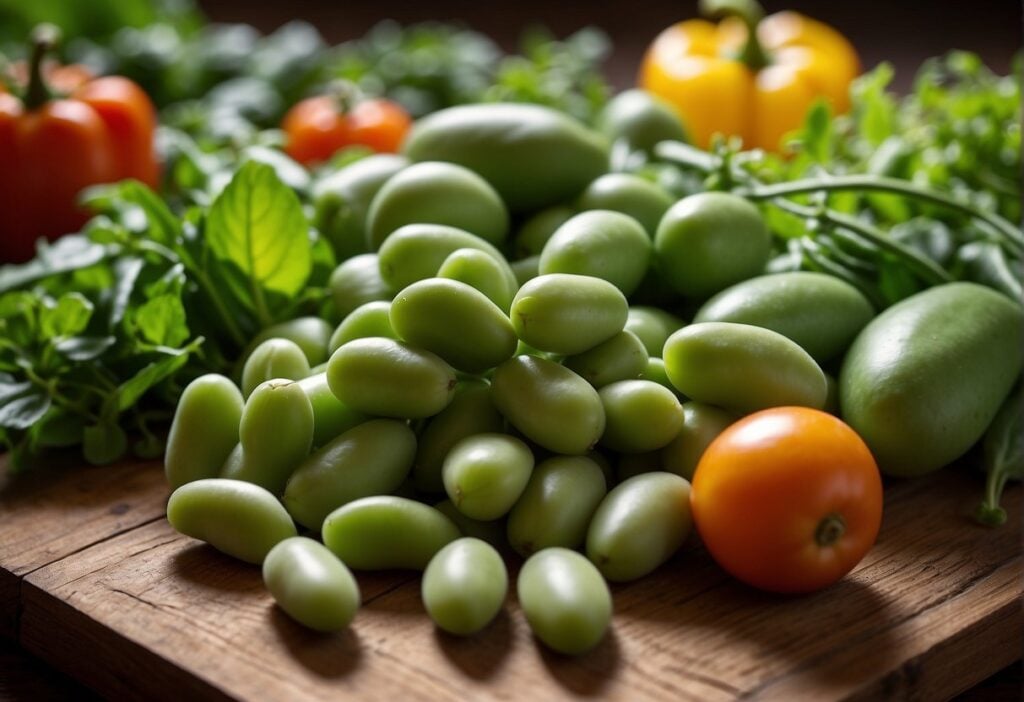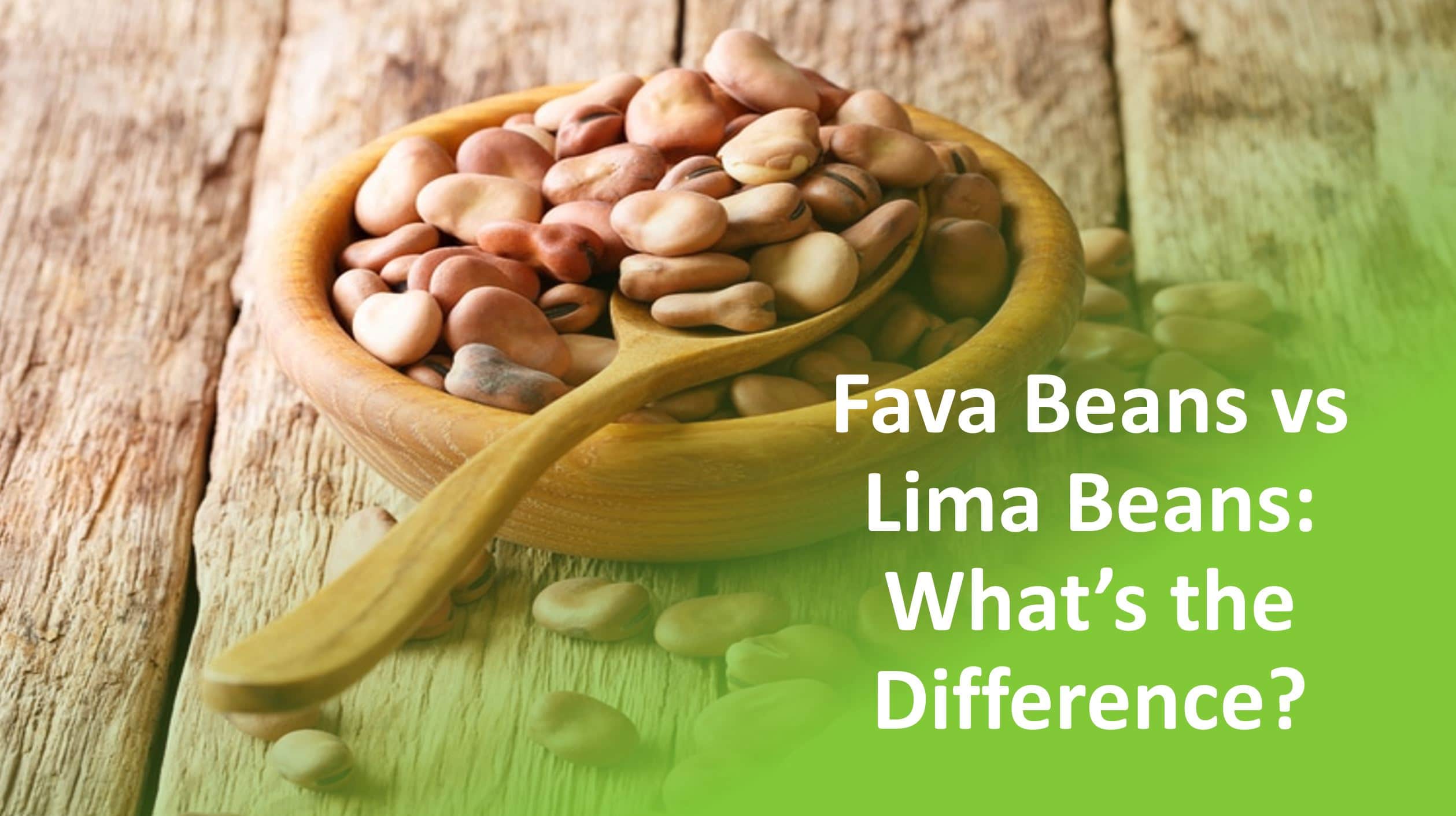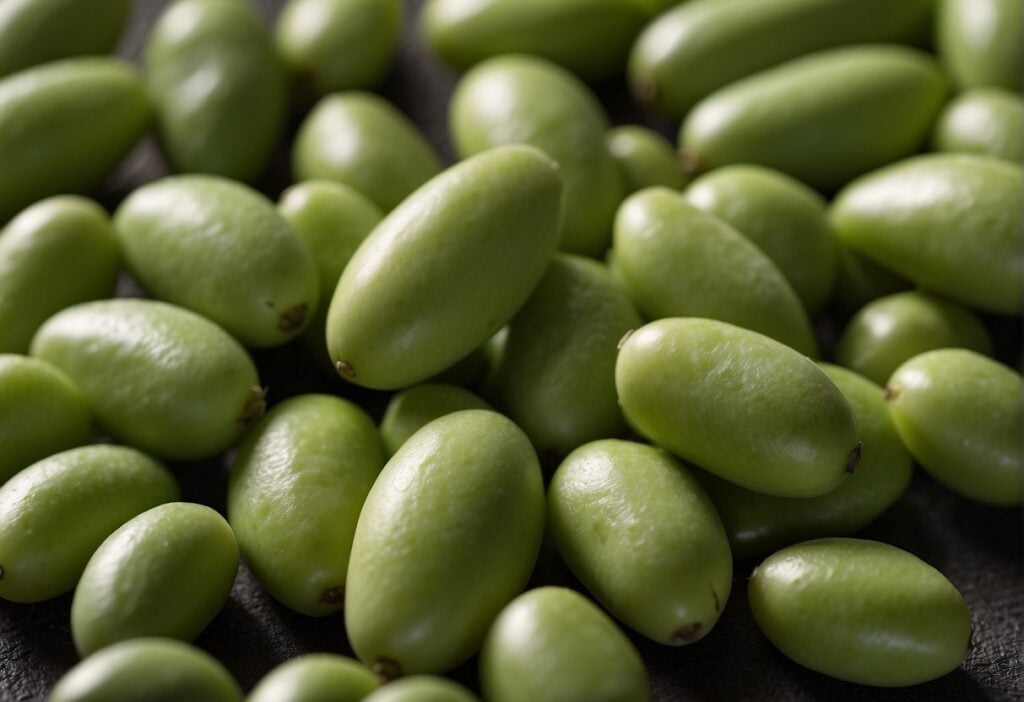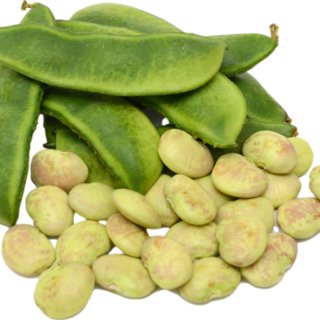Introduction

In the world of legumes, Lima beans and Fava beans are two popular choices that offer distinct flavors, textures, and nutritional profiles. While they may seem similar at first glance, understanding their differences is essential for enhancing your cooking experience and incorporating variety into your meals. Lima beans, also known as butter beans, have a delicate taste and creamy texture, while Fava beans, also called broad beans, have a more earthy flavor and larger size. In this guide, we will explore the nutritional content, culinary uses, and health benefits of both beans, allowing you to make informed choices in your cooking endeavors.
Overview Of Lima Beans And Fava Beans
Lima beans and Fava beans are both popular legumes with unique characteristics. Lima beans, also known as butter beans, have a delicate taste and creamy texture. They are smaller than Fava beans and come in different varieties, such as baby lima beans and Fordhook lima beans. Fava beans, on the other hand, have a more earthy flavor and a larger size. They are commonly used in Mediterranean and Middle Eastern cuisines. Both beans are rich in protein, fiber, and essential nutrients, making them excellent choices for a healthy and balanced diet.
Nutritional Content Comparison
When comparing the nutritional content of Lima Beans and Fava Beans, there are some differences to consider. In terms of calories, Fava Beans have slightly fewer calories than Lima Beans. However, Lima Beans are higher in protein and fiber compared to Fava Beans. Additionally, Lima Beans are a good source of folate and iron, while Fava Beans are rich in vitamin K and magnesium. Both legumes are low in fat and cholesterol, making them nutritious choices for a balanced diet. Incorporating both Lima Beans and Fava Beans into your meals can provide a range of essential nutrients.
Lima Beans

Lima Beans, also known as butter beans, are a popular legume that is native to Central and South America. These creamy and tender beans have a rich flavor and are commonly used in a variety of culinary dishes. Lima beans are often added to soups, stews, and casseroles, and they can also be mashed or pureed for a smooth and creamy texture. Aside from their delicious taste, Lima beans are also packed with important nutrients. They are an excellent source of protein, fiber, folate, and iron, making them a nutritious addition to any diet.
Lima Beans: Origins And Common Uses
Lima beans, also known as butter beans, have their origins in Central and South America. Native to these regions, lima beans have been a staple food in their cuisine for centuries. They have since been introduced and cultivated in various parts of the world due to their versatility and nutritional value. Lima beans are commonly used in a variety of culinary dishes, including soups, stews, and casseroles. They can be mashed or pureed to create a creamy texture and are often enjoyed as a side dish or as an ingredient in vegetarian and vegan recipes. Their mild and buttery flavor makes lima beans a popular choice in both traditional and modern cooking.
Health Benefits Of Lima Beans
Lima beans are not only delicious but also packed with health benefits. They are an excellent source of dietary fiber, which aids in digestion and can help maintain a healthy weight. Lima beans are also rich in protein, making them a great plant-based source of this essential nutrient. Additionally, they are a good source of iron, which is important for red blood cell production, and folate, which is vital for cell growth and development. With their impressive nutrient profile, incorporating lima beans into your diet can contribute to overall health and well-being.
Fava Beans

Fava beans, also known as broad beans, are a type of legume that have been cultivated for thousands of years. They have a rich history and are used in a variety of culinary dishes around the world. Fava beans have a buttery texture and a slightly sweet, nutty flavor. They are commonly used in Mediterranean cuisine and are often found in dishes like salads, stews, and purees. Fava beans are not only delicious, but they also offer numerous health benefits. They are rich in protein, fiber, vitamins, and minerals, making them a nutritious addition to any diet. Incorporating fava beans into your meals can help improve digestion, support heart health, and boost energy levels. Whether you choose to enjoy them as a side dish or as a main ingredient, fava beans are a versatile and nutritious legume option.
Fava Beans: Culinary Uses And History
Fava beans, also known as broad beans, have a rich culinary history that spans centuries. These flavorful legumes have been a staple in Mediterranean cuisine for generations. Fava beans can be used in a variety of dishes, including salads, stews, and purees. In Mediterranean countries like Egypt and Morocco, fava beans are commonly used in traditional dishes such as ful medames and bessara. These beans are also a key ingredient in Italian dishes like pasta e fagioli and fava bean soup. The creamy texture and distinctive flavor of fava beans make them a versatile ingredient in many cuisines around the world. Adding fava beans to your meals can elevate the taste and add a unique twist to your dishes.
Nutritional Value Of Fava Beans
Fava beans are not only delicious but also packed with essential nutrients. They are a good source of protein, providing about 7 grams per half-cup serving. Fava beans are also rich in dietary fiber, with around 7 grams per serving, which helps promote digestive health. These legumes are a good source of vitamins and minerals, including folate, manganese, and iron. Fava beans also contain antioxidants that help protect against cellular damage caused by free radicals. Incorporating fava beans into your diet can contribute to a well-rounded and nutritious meal.
Lima Beans Vs. Fava Beans: Flavor And Texture

When it comes to flavor and texture, there are noticeable differences between Lima beans and Fava beans. Lima beans have a mild taste with slight nutty and sweet undertones. They have a creamy and buttery texture, especially when cooked. On the other hand, Fava beans have a distinct earthy and slightly bitter flavor. They have a firm and meaty texture, making them a popular choice for stews and as a side dish. Both beans offer unique tastes and textures, allowing for a variety of culinary uses.
Comparing The Taste And Texture Of Lima Beans And Fava Beans
Lima beans and fava beans have distinct differences in both taste and texture. Lima beans have a mild flavor with subtle nutty and sweet undertones. They have a creamy and buttery texture, especially when cooked. Fava beans, on the other hand, have an earthy and slightly bitter flavor. They offer a meaty and firm texture, making them ideal for stews and as a side dish. These variations in taste and texture allow for a range of culinary uses and add diversity to meals.
Best Cooking Methods For Each Legume
Lima beans and fava beans can be prepared using various cooking methods, each highlighting their unique flavors and textures. Here are the best cooking methods for each legume:
Lima Beans:
- Boiling: Boiling lima beans until tender is a popular method that brings out their creamy and buttery texture.
- Steaming: Steaming lima beans helps retain their nutrients while maintaining a firm texture.
- Sautéeing: Sautéeing lima beans with herbs and spices adds flavor and enhances their natural sweetness.
- Puréeing: Puréeing cooked lima beans creates a smooth and velvety texture, perfect for dips or spreads.
Fava Beans:
- Boiling: Boiling fava beans until tender is the most common method, making them soft and easy to eat.
- Grilling: Grilling fava beans gives them a smoky flavor and adds a charred, crisp texture to their outer skin.
- Roasting: Roasting fava beans in the oven creates a nutty flavor and a crunchy texture, perfect for snacking or adding to salads.
- Pureeing: Puréeing cooked fava beans produces a velvety texture, ideal for soups, hummus, or spreads.
By using these cooking methods, you can enhance the taste and texture of both lima beans and fava beans, bringing out their unique qualities in various recipes.
Nutritional Profile

Lima beans and fava beans both offer a range of essential nutrients that are beneficial to overall health. When it comes to their nutritional profiles, there are some key differences. Lima beans, for instance, are a good source of dietary fiber, protein, and folate. They also contain significant amounts of iron, potassium, and magnesium. On the other hand, fava beans are rich in protein, fiber, and folate, along with vitamins A and C. They also provide ample amounts of iron, potassium, and manganese. Incorporating both of these legumes into your diet can provide a diverse array of beneficial nutrients.
Differences In The Macronutrient And Micronutrient Content Of Lima Beans And Fava Beans
Lima beans and fava beans have different macronutrient and micronutrient profiles. Lima beans are a good source of dietary fiber, protein, and folate. They also contain substantial amounts of iron, potassium, and magnesium. On the other hand, fava beans are rich in protein, fiber, and folate, along with vitamins A and C. They also provide ample amounts of iron, potassium, and manganese. These variations in nutrient content make both legumes unique and offer different health benefits. Incorporating a variety of legumes into your diet can ensure a diverse intake of essential nutrients.
Impact On Health Benefits
The different nutrient profiles of lima beans and fava beans have a significant impact on their health benefits. Lima beans, with their high fiber content, can help promote digestive health and prevent constipation. They are also a good source of protein, which is essential for muscle growth and repair. Fava beans, on the other hand, are rich in iron, which plays a crucial role in transporting oxygen throughout the body. The abundance of vitamins and minerals in both legumes contributes to overall health and well-being. Incorporating a variety of legumes into your diet can provide a diverse range of health benefits.
Conclusion

In conclusion, both lima beans and fava beans are nutritious legumes with unique characteristics and benefits. Lima beans are known for their high fiber and protein content, which supports digestive health and muscle growth. On the other hand, fava beans are rich in iron and offer a diverse range of vitamins and minerals. Incorporating both legumes into your diet can provide a variety of health benefits. Whether you prefer the creamy texture of lima beans or the nutty flavor of fava beans, these legumes are a great addition to any meal. So go ahead and explore the world of legumes!
Key Takeaways On Lima Beans Vs. Fava Beans
In summary, Lima beans and Fava beans are both nutritious legumes with distinct differences. Lima beans have a mild taste with slight nutty and sweet undertones, while Fava beans have a more earthy and slightly bitter flavor. Lima beans have a creamy texture when cooked, while Fava beans have a smoother texture due to their thinner skin. When it comes to nutritional content, Lima beans are high in fiber and protein, while Fava beans are rich in iron and other essential vitamins and minerals. Both legumes can be incorporated into various recipes to add flavor, texture, and a range of health benefits to your diet.
Recipe Ideas And Cooking Tips For Incorporating Both Legumes Into Your Diet
There are countless ways to incorporate both Lima beans and Fava beans into your diet. Here are some recipe ideas and cooking tips to help you get started:
- Salads: Add cooked Lima beans or Fava beans to your favorite salad for a protein boost and added texture.
- Soups and stews: Use Lima beans or Fava beans as a hearty addition to your soups and stews to enhance the flavor and create a more satisfying meal.
- Purees and dips: Blend cooked Lima beans or Fava beans with herbs, spices, and olive oil to create delicious dips and spreads.
- Roasted beans: Toss cooked Lima beans or Fava beans with olive oil, salt, and your favorite seasonings, then roast them in the oven for a crispy and nutritious snack.
- Pasta dishes: Incorporate Lima beans or Fava beans into pasta dishes, such as pasta primavera or pasta salads, for added protein and texture.
- Casseroles and rice dishes: Mix cooked Lima beans or Fava beans into casseroles or rice dishes for a satisfying and nutritious meal.
Remember to experiment with different flavors and cooking techniques to find your favorite way to enjoy these versatile legumes.
FAQ About Lima Beans Vs Fava Beans: Exploring Legume Differences
Q: What are Lima beans and Fava beans?
A: Lima beans and Fava beans are both types of legumes that belong to the bean family. Lima beans are small, flat, and kidney-shaped, while Fava beans are large, flat, and oval-shaped.
Q: How do Lima beans and Fava beans differ in taste and texture?
A: Lima beans have a buttery texture and a slightly sweet taste, whereas Fava beans have a creamy texture and a nutty flavor.
Q: Can Lima beans and Fava beans be used interchangeably in recipes?
A: While both beans are nutritious and versatile, Lima beans and Fava beans have distinct flavors and textures that may not always be interchangeable in recipes. It is best to use them according to the specific recipe requirements.
Q: What are the nutritional differences between Lima beans and Fava beans?
A: Lima beans are rich in fiber, protein, and folate, while Fava beans are high in protein, fiber, and essential minerals like iron and potassium.
Q: How should Lima beans and Fava beans be prepared for cooking?
A: Lima beans can be cooked by boiling, steaming, or sautéing, while Fava beans need to be shelled, blanched, and peeled before consumption to remove their tough outer skin.
Q: Are there any health considerations when consuming Lima beans or Fava beans?
A: Both Lima beans and Fava beans are nutritious choices, but some people may be allergic to legumes. It is advisable to consult a healthcare provider if you have any concerns about including these beans in your diet.
Q: Are there any popular dishes that feature Lima beans or Fava beans?
A: Lima beans are commonly used in succotash, soups, and stews, while Fava beans are popular in Mediterranean and Middle Eastern cuisines, such as in ful medames or as a side dish.

Marine Bay Restaurant received the International Food Culture Award 2019 as the Best Szechuan & Hunan Restaurant, enjoying a reputation in North America. Renowned for the tunnel, authentic, and cheap. Known as “Human Taste First Garden,” 2013 Vancouver culinary first book named “Best Chuan Xiang Outlets,” significant temperature and China Eastern Airlines designated outlets.